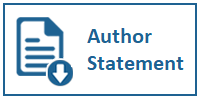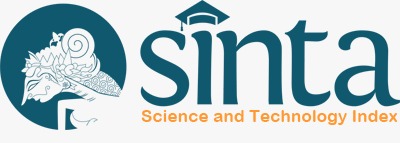Micro-Scale CPV Performance Enhancement through V-Trough Concentration and Passive Cooling
DOI:
https://doi.org/10.31937/sk.v17i1.4206Abstract
The global reliance on fossil fuels has driven the need for clean, renewable alternatives. Concentrated Photovoltaic (CPV) systems offer a promising solution by increasing energy yield per unit area, particularly in regions with high solar irradiance. This study investigates the performance enhancement of a micro-scale CPV system through the integration of a V-trough optical concentrator and passive thermal regulation mechanisms. Five system variants were developed and tested: a baseline with no enhancement, a standard CPV, and three CPV systems incorporating heat sinks, heat pipes, and a hybrid of both. Optical simulations were performed to achieve a 2× concentration ratio using planar mirrors angled at 60°, while all cooling systems relied on passive methods to maintain simplicity and low cost. Field tests conducted in a tropical environment revealed that all CPV systems outperformed the baseline, with the hybrid-cooled system delivering the highest average power output—138.76 mW, a 32.37% improvement over the baseline. Surface temperatures were also significantly reduced, with the hybrid system lowering temperatures by up to 6.8°C. These results highlight the synergistic potential of combining optical and passive thermal enhancements in compact CPV designs, providing a scalable, cost-effective solar energy solution suitable for rural and off-grid applications in high-irradiance regions.
Downloads
Downloads
Published
How to Cite
Issue
Section
License
Copyright (c) 2025 Nicholas Robert, Johanes Dimas Paramasatya, Niki Prastomo

This work is licensed under a Creative Commons Attribution-ShareAlike 4.0 International License.
Authors retain copyright and grant the journal right of first publication with the work simultaneously licensed under a Creative Commons Attribution-ShareAlike International License (CC-BY-SA 4.0) that allows others to share the work with an acknowledgment of the work's authorship and initial publication in this journal.
Authors are able to enter into separate, additional contractual arrangements for the non-exclusive distribution of the journal's published version of the work (e.g., post it to an institutional repository or publish it in a book), with an acknowledgment of its initial publication in this journal.
Copyright without Restrictions
The journal allows the author(s) to hold the copyright without restrictions and will retain publishing rights without restrictions.
The submitted papers are assumed to contain no proprietary material unprotected by patent or patent application; responsibility for technical content and for protection of proprietary material rests solely with the author(s) and their organizations and is not the responsibility of the ULTIMA Computing or its Editorial Staff. The main (first/corresponding) author is responsible for ensuring that the article has been seen and approved by all the other authors. It is the responsibility of the author to obtain all necessary copyright release permissions for the use of any copyrighted materials in the manuscript prior to the submission.















